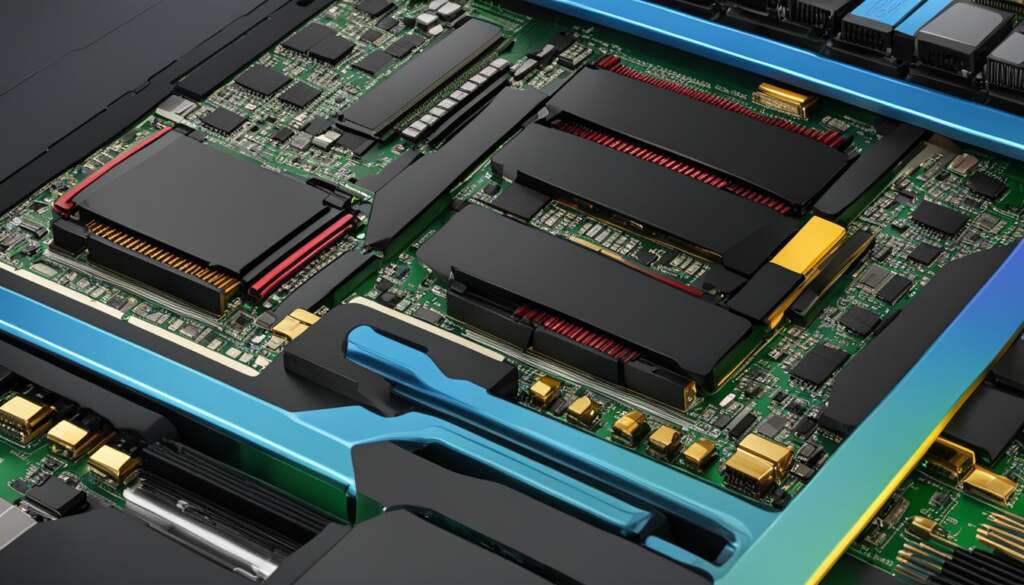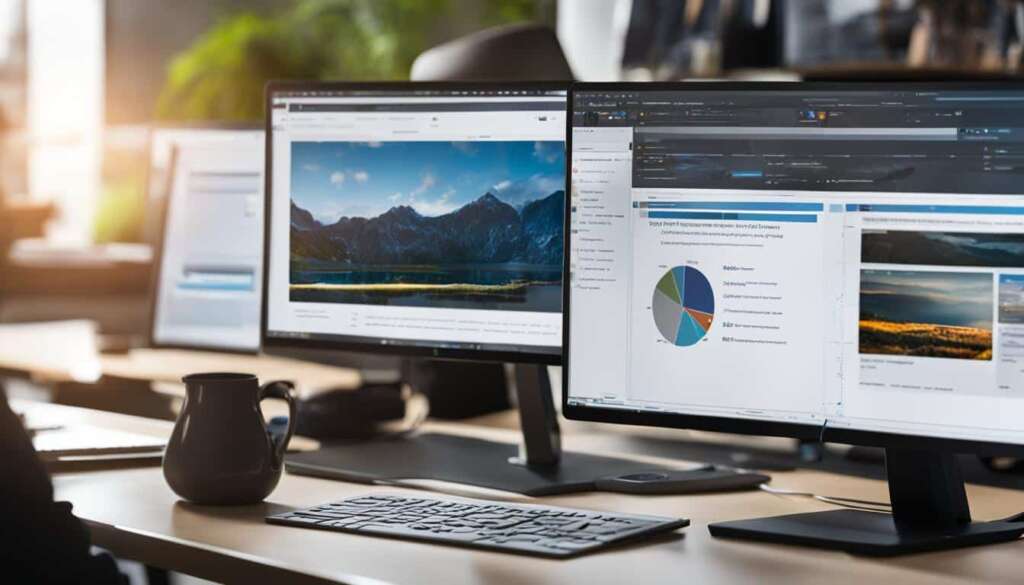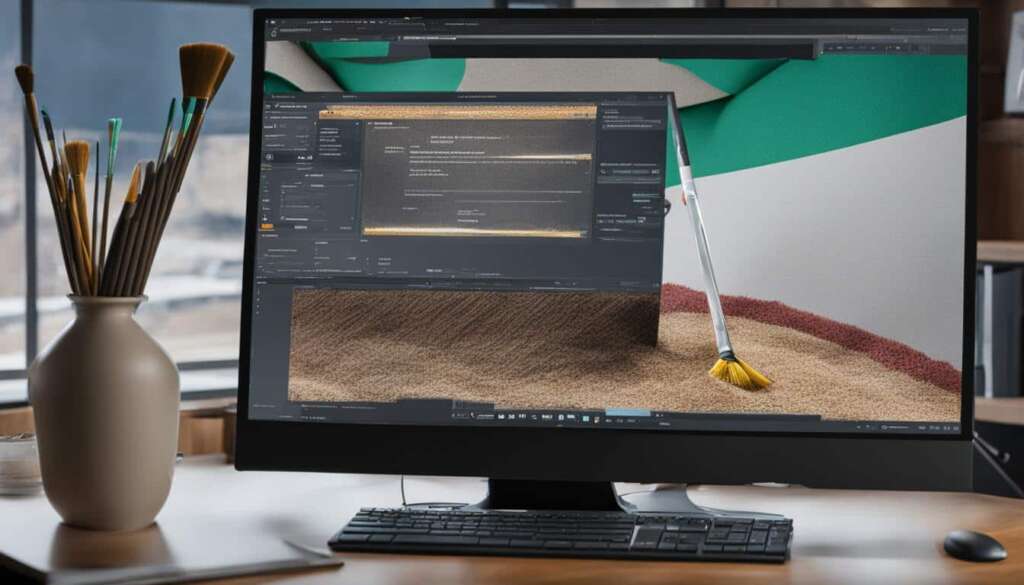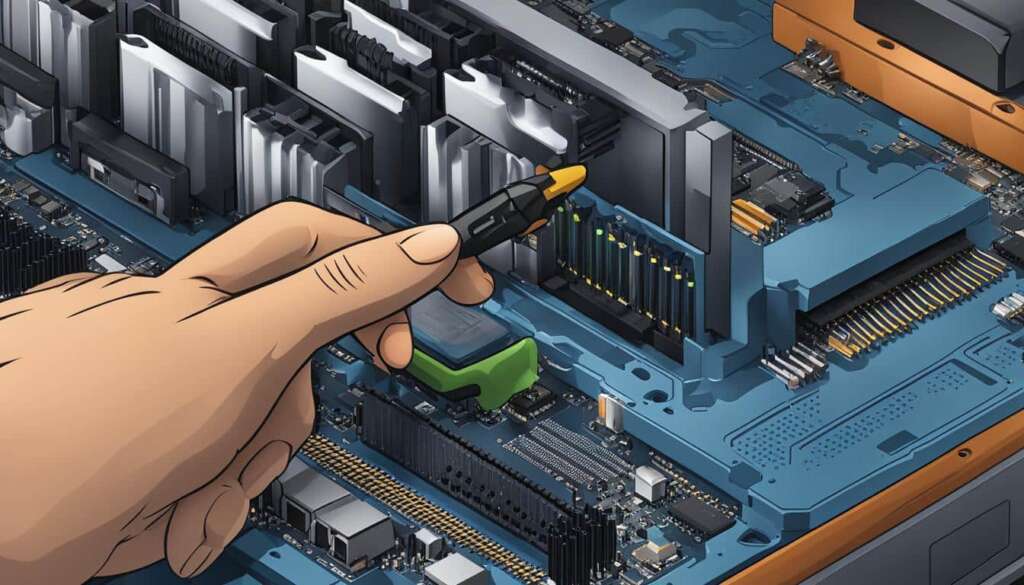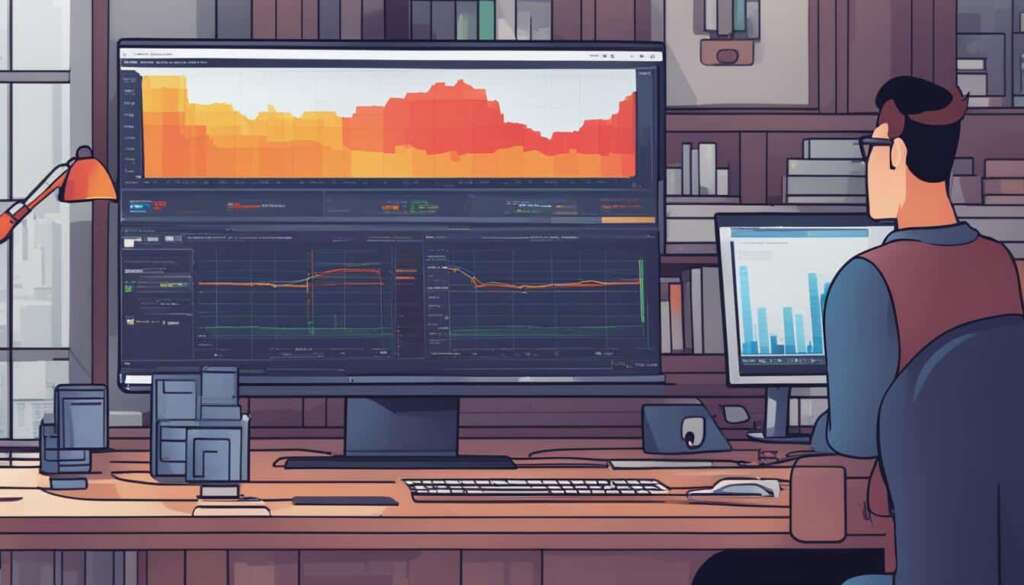Table of Contents
To ensure optimal performance of your computer, it’s important to know how to check RAM on your PC. RAM, or random access memory, plays a crucial role in the speed and efficiency of your computer’s operations. In this section, we will guide you through the process of checking RAM on different operating systems, such as Windows 11, Windows 10, Windows 7, and macOS.
You will learn how to determine your RAM capacity, identify the type of RAM installed on your PC, and monitor your RAM usage. Additionally, we will provide insights on when it might be necessary to upgrade your RAM, as well as how to check your memory for errors. Let’s get started and optimize your PC’s memory.
Whether you’re a PC or Mac user, knowing how to check your RAM is essential for maintaining your computer’s performance. By understanding your RAM capacity, type, and usage, you can make informed decisions about upgrading your memory and freeing up RAM for smoother operations.
How to Check RAM on Windows PC
If you are using a Windows PC, you can easily check your RAM capacity and monitor its usage. RAM, which stands for random access memory, plays a crucial role in the speed and efficiency of your computer’s operations.
On Windows 11 and Windows 10, you can access the “About your PC” menu by typing it in the Windows search box. In the Device Specifications section, you will find your total RAM capacity displayed next to Installed RAM.
Similarly, on Windows 7, you can use the Task Manager to check your current RAM usage. Launch the Task Manager by pressing Ctrl + Shift + Esc or right-clicking the Taskbar and selecting Task Manager. Navigate to the Performance tab, where you will see the current RAM usage displayed in the Memory box, and the total RAM capacity listed under Physical Memory.
To determine the type of RAM installed on your PC, you can use third-party tools like CPU-Z, which provides detailed information about your memory type.
By monitoring your RAM usage in Task Manager, you can easily identify any excessive memory usage or potential bottlenecks in your system.
Windows PC RAM Check Methods
| Operating System | RAM Check Method | RAM Type Determination |
|---|---|---|
| Windows 11 and Windows 10 | Access “About your PC” menu | Third-party tools like CPU-Z |
| Windows 7 | Use the Task Manager | Third-party tools like CPU-Z |
Checking your RAM on a Windows PC is essential for optimizing your computer’s performance and ensuring efficient system operations. By regularly monitoring your RAM usage, you can identify any potential issues and take necessary steps to address them.
How to Check RAM on macOS
If you are using a macOS device, such as a Mac desktop or MacBook laptop, checking your RAM is a straightforward process. On a Mac, you can find information about your RAM by opening the Apple menu and selecting “About This Mac.” Next to the Memory section, you will see the amount of RAM installed on your Mac and its specifications.
To determine the type of RAM on your macOS device, you can use the System Information tool. Open Spotlight search by clicking the magnifying glass icon and type “system information” to launch the tool. Click on the Memory tab to see more information about your RAM, including the type.
If you want to monitor your RAM usage on macOS, you can use the Activity Monitor. Open it by clicking Go > Utilities in the macOS menu bar, and then double-clicking on Activity Monitor. In the Memory tab, you can view the running processes and their memory usage.
By checking your RAM usage on macOS, you can ensure efficient system performance and detect any memory-related issues.
| Steps | Description |
|---|---|
| Step 1 | Open Apple menu |
| Step 2 | Select “About This Mac” |
| Step 3 | Check RAM information in the Memory section |
| Step 4 | Launch Spotlight search |
| Step 5 | Type “system information” |
| Step 6 | Open System Information tool |
| Step 7 | Click on the Memory tab to view RAM details |
| Step 8 | Open Activity Monitor |
| Step 9 | Navigate to the Memory tab to monitor RAM usage |
Do I Need to Upgrade My RAM?
If your computer is experiencing frequent slowdowns, freezes, or “low memory” error messages, it might be time to consider upgrading your RAM. Upgrading RAM can significantly improve your computer’s performance, especially when dealing with memory-intensive tasks like gaming, multimedia editing, or running multiple applications simultaneously.
The amount of RAM you need depends on your specific usage and requirements. For general users, 8 GB of RAM is typically sufficient for smooth performance. However, for more demanding tasks, such as gaming, graphic design, or video editing, 16 GB or more may be necessary. It’s important to check your current RAM capacity and evaluate whether it meets your needs.
If you have a desktop PC or an upgrade-friendly laptop, adding more RAM is a relatively simple process. However, some laptops have the RAM permanently soldered to the motherboard, making upgrades challenging. Before upgrading your RAM, ensure compatibility with your system and consider other factors like CPU and storage performance to address potential system bottlenecks. Regularly checking your RAM usage and monitoring for memory errors can help you determine if upgrading your RAM is necessary for optimal computer performance.
FAQ
How do I check RAM on my PC?
To check RAM on your PC, you can access the “About your PC” menu on Windows 11 and Windows 10. On Windows 7, you can use the Task Manager to check RAM usage. Third-party tools like CPU-Z can help you determine the type of RAM installed on your PC.
How do I check RAM on Windows 11?
To check RAM on Windows 11, access the “About your PC” menu by typing it in the Windows search box. The total RAM capacity will be displayed next to Installed RAM in the Device Specifications section.
How do I check RAM on Windows 10?
To check RAM on Windows 10, access the “About your PC” menu by typing it in the Windows search box. The total RAM capacity will be displayed next to Installed RAM in the Device Specifications section.
How do I check RAM on Windows 7?
To check RAM on Windows 7, use the Task Manager. Launch the Task Manager by pressing Ctrl + Shift + Esc or right-clicking the Taskbar and selecting Task Manager. The current RAM usage can be found in the Memory box under the Performance tab, while the total RAM capacity is listed under Physical Memory.
How do I check RAM on macOS?
To check RAM on macOS, open the Apple menu and select “About This Mac.” The amount of RAM installed on your Mac will be displayed next to the Memory section. The System Information tool can provide more detailed information about your RAM, including the type.
How do I monitor RAM usage on macOS?
To monitor RAM usage on macOS, use the Activity Monitor. Open it by clicking Go > Utilities in the macOS menu bar, and then double-click on Activity Monitor. In the Memory tab, you can view running processes and their memory usage.
When should I consider upgrading my RAM?
You should consider upgrading your RAM if your computer experiences frequent slowdowns, freezes, or “low memory” error messages. Upgrading RAM can significantly improve performance, especially for memory-intensive tasks like gaming or multimedia editing.
How much RAM do I need?
The amount of RAM you need depends on your specific usage and requirements. For general users, 8 GB of RAM is typically sufficient. However, for more demanding tasks like gaming or video editing, 16 GB or more may be necessary.
Can I upgrade the RAM in my PC?
If you have a desktop PC or an upgrade-friendly laptop, adding more RAM is a relatively simple process. However, some laptops have the RAM permanently soldered to the motherboard, making upgrades challenging. Check the compatibility of the RAM with your system and consider other factors like CPU and storage performance before upgrading.
How do I address memory errors?
Regularly checking your RAM usage and monitoring for memory errors can help you determine if upgrading your RAM is necessary for optimal computer performance. If you encounter memory errors, it may indicate a need for a RAM upgrade or troubleshooting potential issues with the memory modules.

